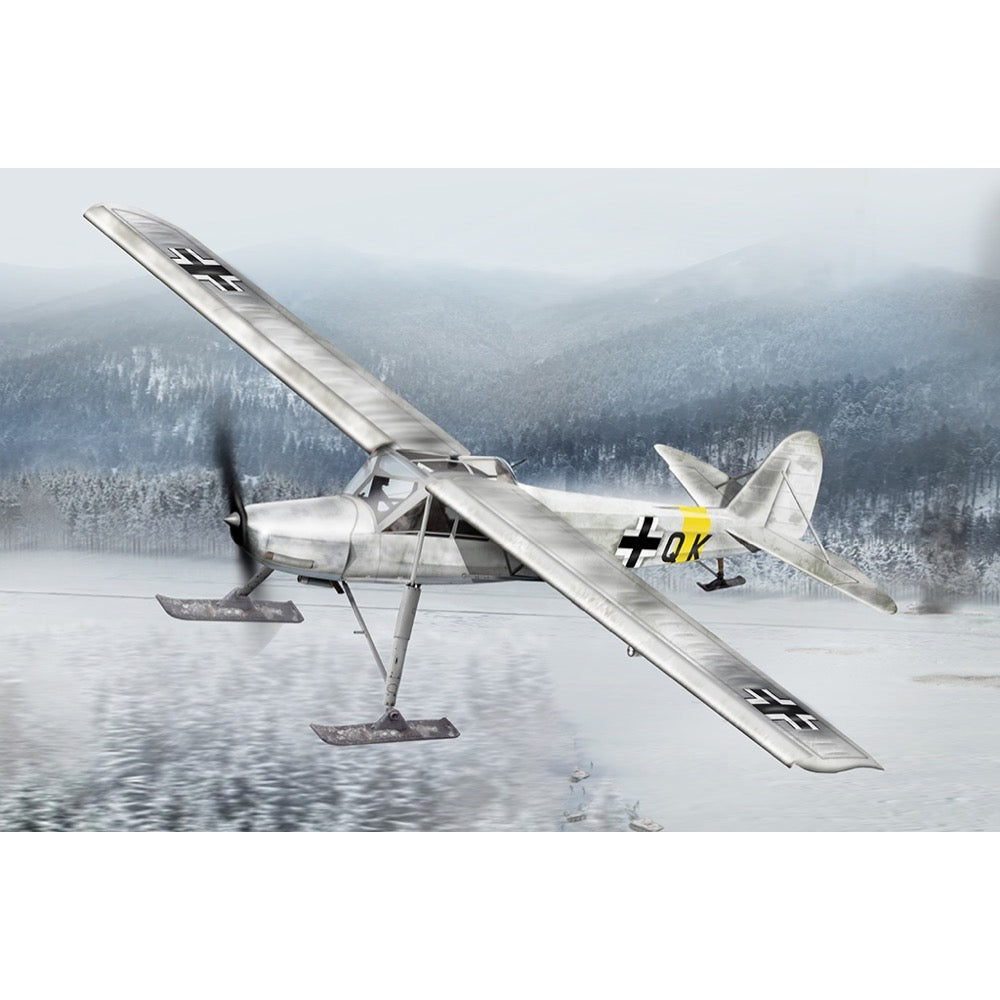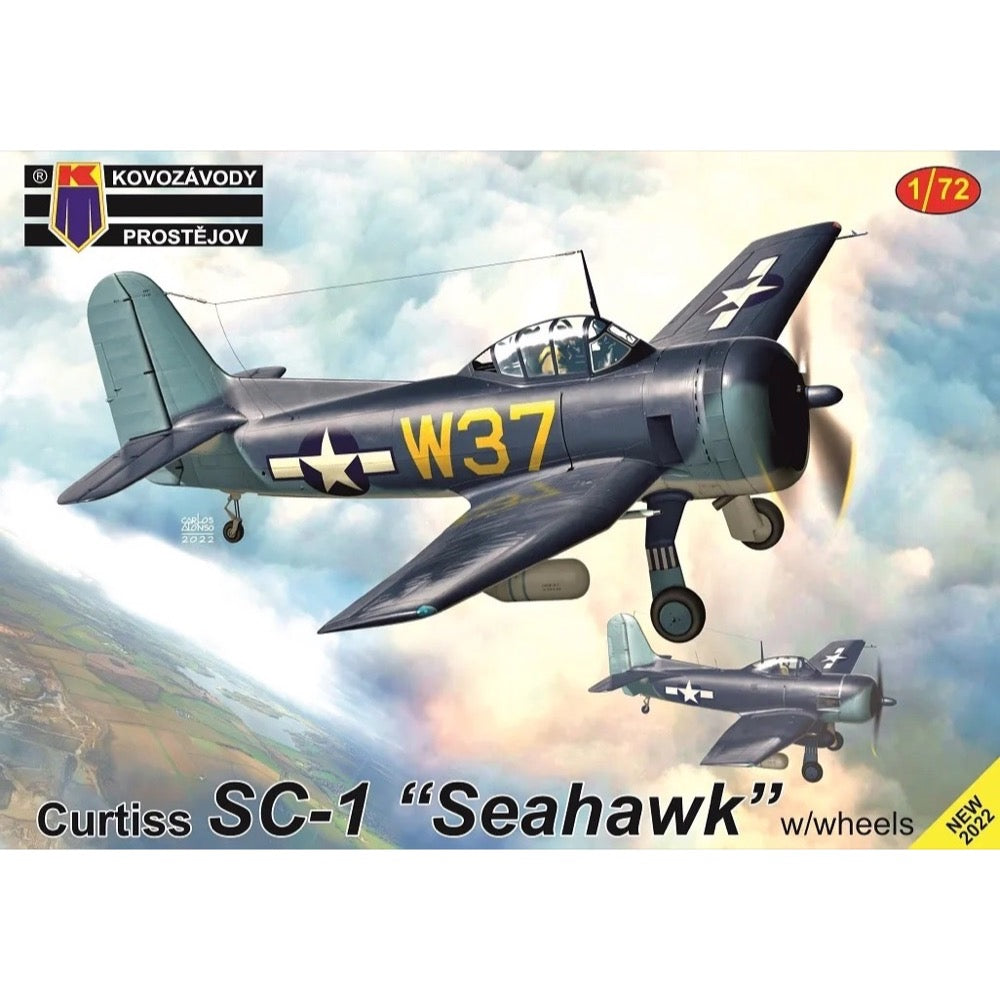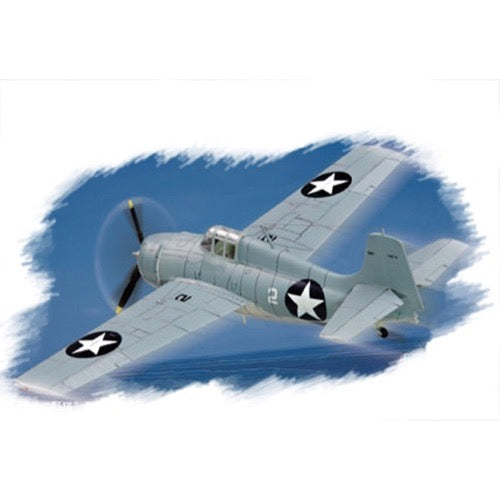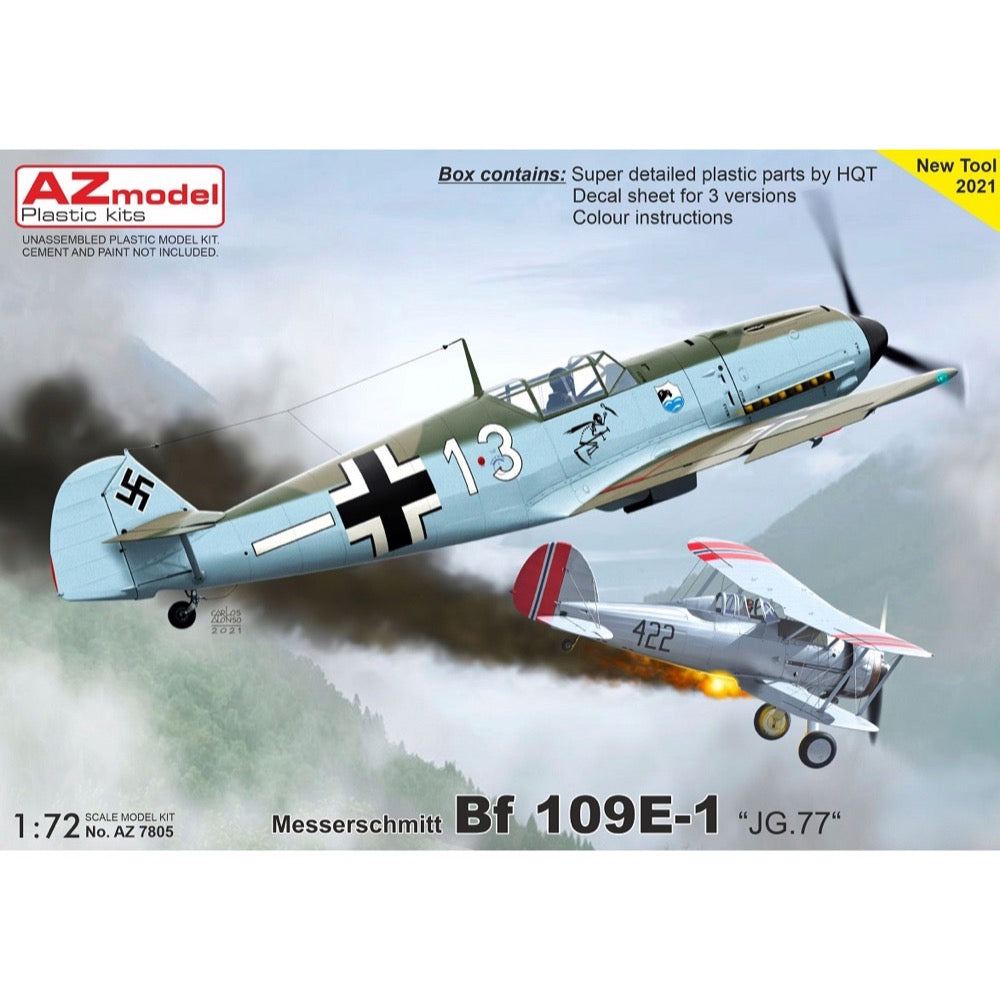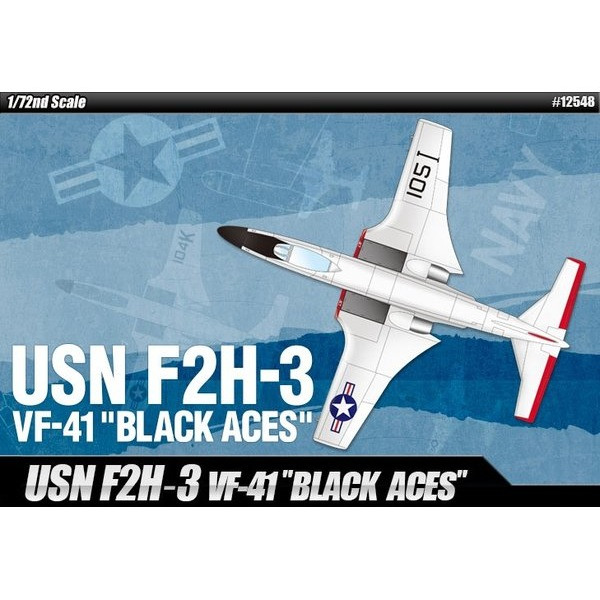
Academy 12548 1/72 USN F2H-3 VF-41 "Black Aces" Banshee
The McDonnell-Douglas F2H Banshee is an American, twin-engine, on-board fighter-bomber and reconnaissance aircraft. The flight of the prototype took place on January 11, 1947, and the machine entered service from 1948. It was powered by two Westinghouse J34-WE-34 jet engines with a thrust of 14.5kN each. The F2H Banshee served in the US Navy from 1948 to 1959 and, together with the F9F Panther, was the US Navy's primary deck fighter during the Korean War. A total of nine versions of this aircraft were created, of which only two (F2H-2P and F2H-3P - both versions are photographic reconnaissance aircraft) performed different tasks than fighter or bombing. The planes served in the US Navy and in the Marine Corps. Canada turned out to be one foreign recipient. In total, 895 F2Hs were built. Technical data: Maximum speed: 933 km / h, rate of climb: 30 m / s, maximum ceiling 14205 m, maximum range: 2760 km, armament: fixed - 4 Colt Mk.16 20mm cannons, suspended - up to 1580 kg of bombs and rockets.
This is an injection-plastic jet aircraft model kit.
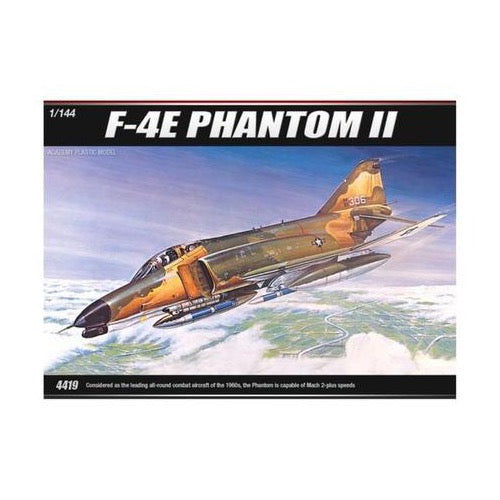
Academy 12605 1/144 F-4E Phantom II
The McDonnell-Douglas F-4 Phantom is a long-range, twin-engine, two-seater multi-role fighter designed for operations in difficult weather conditions. The flight of the prototype took place on May 27, 1958, and serial production began in 1961. Originally, the F-4 was intended only as a stormtrooper, but from 1955 on, the design work went towards meeting the US Navy's need for a new on-board fighter. The F-4 Phantom turned out to be a very successful machine, produced in several versions, exported to many countries and produced under license. The first versions are models from A to D intended for fighter-bombers. The next version is the F-4E, produced since 1967 as a long-range fighter. Reconnaissance versions were also created: RF-4B, RF-4C and RF-4E. The latest versions are the F-4F and F-4G Wild Weassel - these are electronic warfare planes and designed to fight the enemy radars. The F-4 took part in the Vietnam War, the conflicts in the Middle East (1967, 1973) and the Iran-Iraq War (1980-1988). In total, 5,057 F-4 Phantom aircraft were built. Technical data (version F-4E): Maximum speed: 2370 km / h, speed of climb: 210 m / s, maximum ceiling 18300 m, maximum range: 2600 km, armament: fixed - 1 20mm M61A-1 cannon, Suspended - up to 7255 kg of bombs and rockets.
This is an injection-plastic jet aircraft model kit.
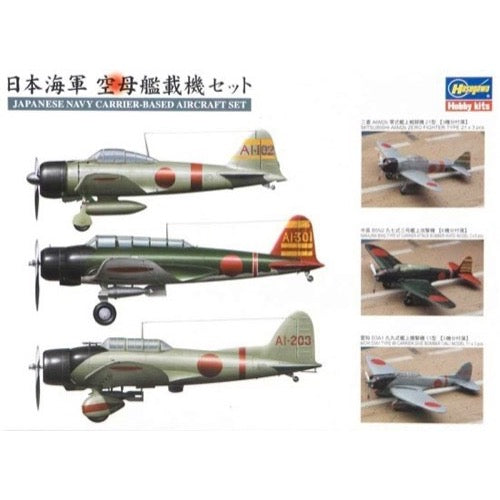
Hasegawa H72130 1/350 Japanese Navy Carrier-Based Aircraft Set
This fantastic set of IJN aircraft is just the thing you need to increase the air power of your 1/350 Hasegawa Akagi! Molded in clear plastic for easy and realistic painting of the canopies, these little guys have surface detail that the folks at Hasegawa describe as equal to that of their larger 1/48 cousins...I held them in my hands, and can vouch for that claim! The recessed panel lines and other details are indeed ultra-sharp, even at this wee scale.
The set includes three Mitsubishi A6M2b Type 21 Zero Fighters, six Nakajima B5N2 Type 97 Model 3 Carrier Attack Bombers (Kate) with your choice of bombs or torpedoes, and three Aichi D3A1 Type 99 Model 11 Carrier Dive Bombers (Val).
The decals are basically for Akagi-based aircraft, but the numbers and markings can be modified to build aircraft from other IJN carriers that participated in the Pearl Harbor attack, such as the Kaga, Soryu, Hiryu, Zuikaku, and Shokaku.
Specification
- Item Size/Weight: 29 x 21 x 5.3 cm / 200g
- Scale: 1/350
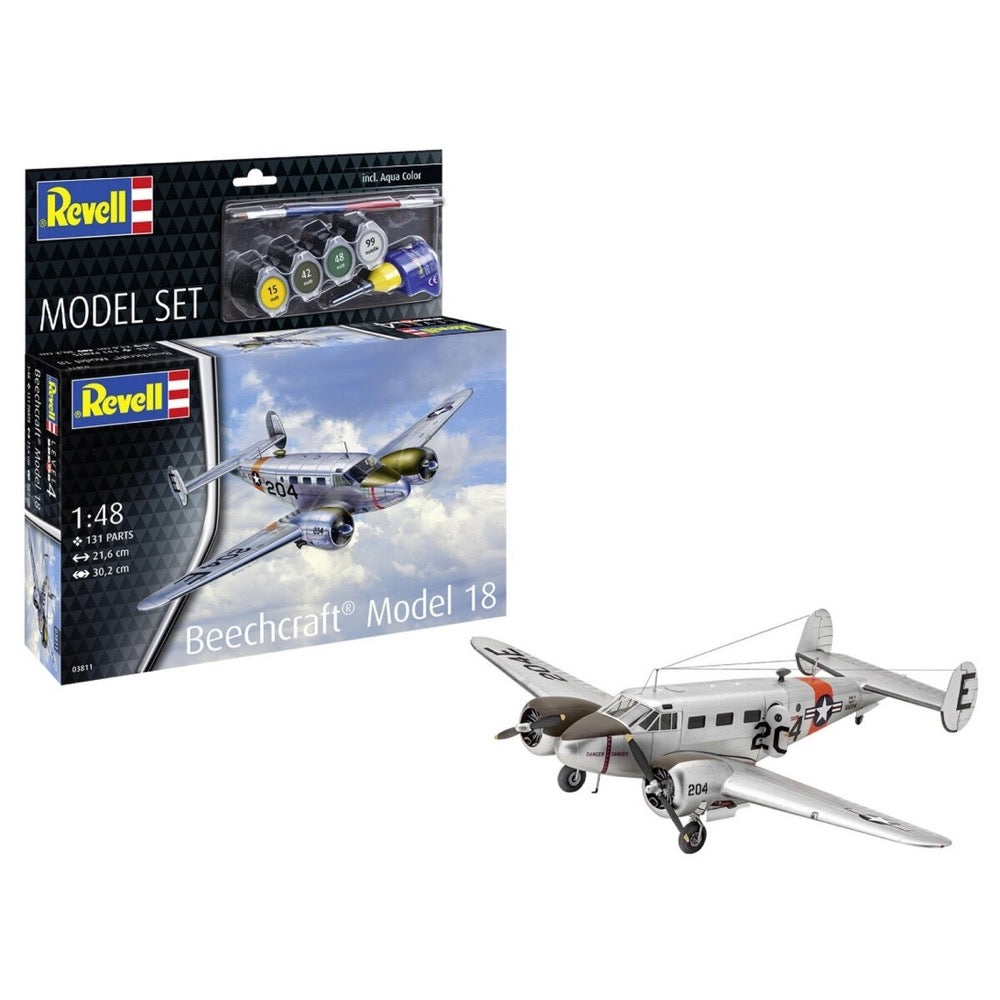
Revell 63811 1/48 Beechcraft Model 18 Model Kit Set
Model kit of the popular Beechcraft Model 18 - Twin Beech. The Model 18 was produced over 9000 times between 1937 and 1970 and has thus earned itself a firm place in aviation history.
Features
- Highly detailed kit
- Classics of aviation history
Markings
- Navy Air Station Minneapolis, Minnesota 1950
- Eastern Caribbean Airways Cuba 1962
Includes
- Plastic model kit (not assembled)
- Illustrated, multilingual assembly instructions
- Decals
- Basic colors (Revell Aqua Color)
- Adhesive (Revell Contacta Professional Mini)
- Paint brush
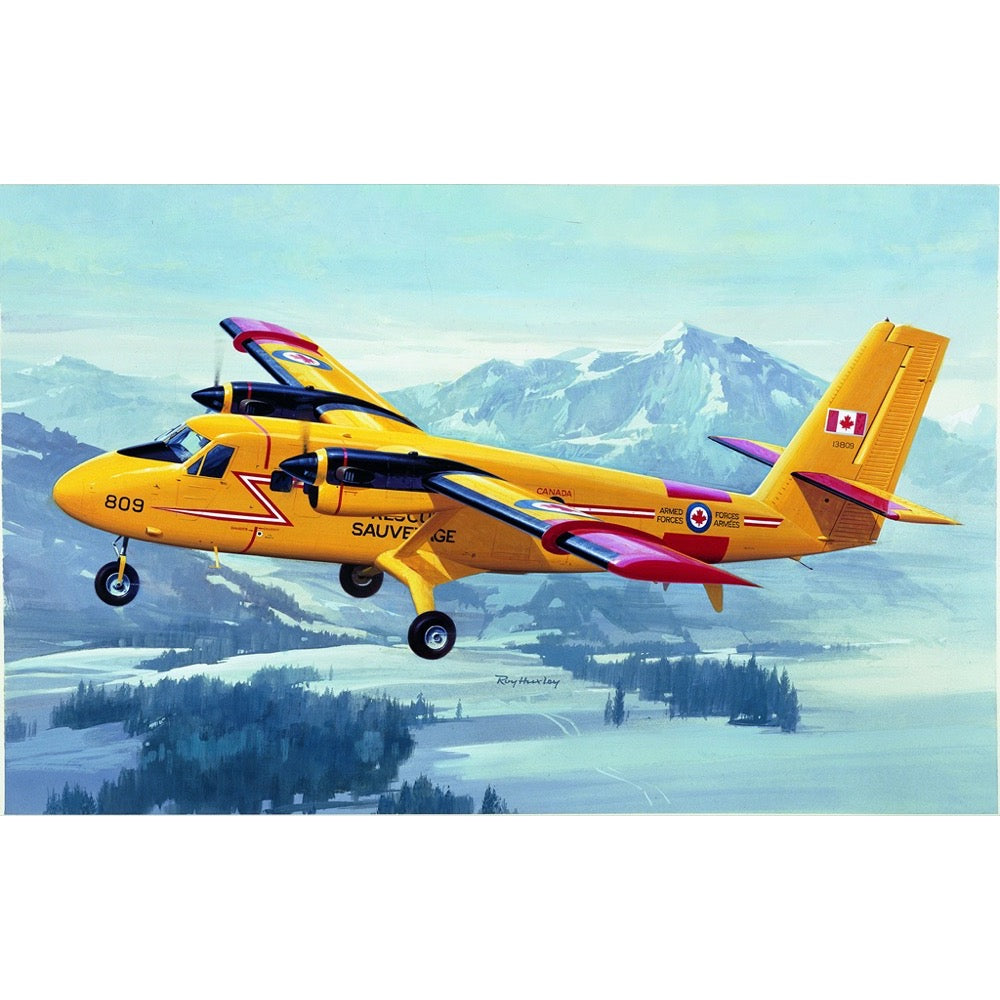
Revell 04901 1/72 DHC-6 Twin Otter
The Twin Otter is a very versatile aircraft that can be used on wheels, skids or with floating pods for transport, reconnaissance or rescue flights. In May 1965, the Twin Otter flew for the first time. The start of production for the 100 series was granted in 1966, 115 machines were built until this was replaced by the 200 series with an extended fuselage nose. It has excellent STOL properties and is used for both civilian and military purposes. The machines received PT6A engines with 652 hp, payload: 2.6 t.
Features
- Historical model (Matchbox form)
- Structured surfaces
- Cockpit with instrument panel
- Attachment of 2 different nose segments
- Movable propellers
- Alternative attachment of the landing gear, ski runners or floating pods
Authentic decals for the following versions
- DHC-6 Twin Otter, no. 440 Squadron, Canadian Armed Forces, Namao, Canada, May 1983
- DHC-6 Twin Otter, West Coast Air, Victoria Harbour, Canada, October 2006
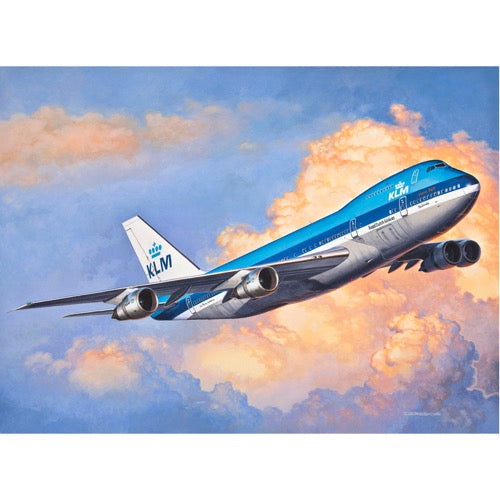
Revell 03999 1/450 Boeing 747-200 Jumbo Jet
Boeing 747-200
The Boeing 747 - colloquially known as the Jumbo Jet - was the world's largest commercial aircraft until 2005. After its maiden flight in February 1969 and the first production version, modifications with more powerful engines and greater fuel capacity followed under the designation 747-200.
Features
- Textured surfaces
- Simulated landing gear
- 4 engines
Authentic representation of the following version:
- Boeing 747-206B of KLM (Royal Dutch Airlines) September 1988
- Boeing 747-206B of KLM (Royal Dutch Airlines) July 1989
Specifications
- Scale: 1:450
- Age recommendation: 10+
- Number of parts: 22
- Length: 158 mm
- Wingspan: 133 mm
Includes
- Kit incl. building instructions and decal sheet
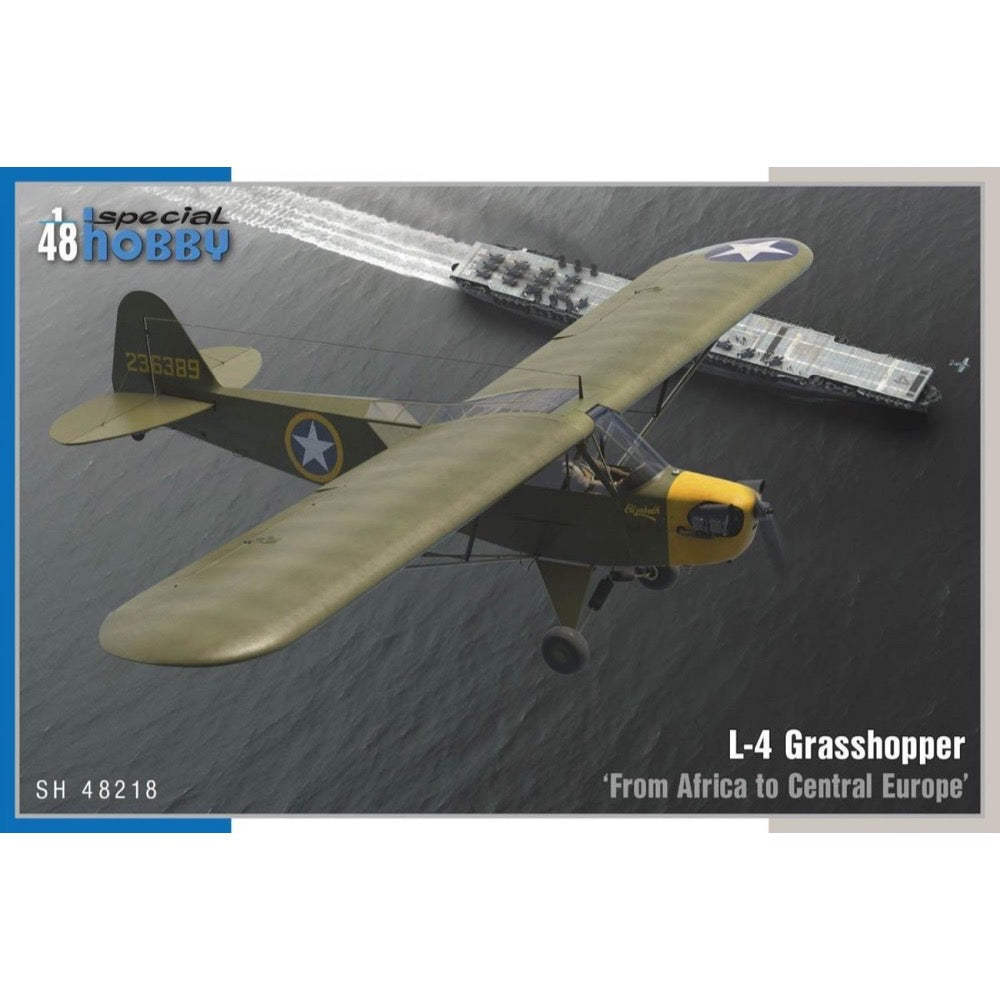
Special Hobby 48218 1/48 L-4 Grasshopper From Africa to Central Europe
It quite soon became clear to the US military, as well as the British RAF, that the rather large and complicated types such as the O-47 or Lysander which had been designed in the pre-war days for army co-operation, close support, artillery observation and liaison roles were in fact ill-suited for real operations. Lighter types with the ability of very short take offs and landings proved much more successful. And arguably the most famous of all types of this category is the L-4 Grasshopper, developed from the originally civilian J-3 Cub which had done really well during US Army pre-war exercises.
The first of our boxings captures the Grasshoppers’ combat journey beginning with the Operation Torch, the Allied landing in Africa, through the landing in Italy, Normandy, to the US airfields in western Bohemia, Czechoslovakia, where the Grasshoppers ended their WW2 combat service.
Two styrene sprues are joined by one clear parts sprue and a decal sheet with markings for four airframes.
Features
-
There has been no new and fine L-4 Grasshopper kit for more than five decades.
-
Interesting colour schemes
-
Etches included in the kit
-
Pre-cut masks available separately


